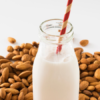2020 Annual Meeting Photo Gallery













It’s no secret that plant-based diets have become more popular, and with an increased focus on sustainability and the environment, the attention on this type of diet will only continue to grow. Consumers are increasingly shifting toward “flexitarian” lifestyles, which include a diet that is mostly plant-based with occasional consumption of animal products. According to a report by Bloomberg Intelligence, plant-based food sales are expected to see a fivefold increase by 2030. What does this mean for the food ingredient industry?
A common misconception is that all plant-based foods are labeled “organic” or “all-natural” and consist of mostly vegetables and seeds. The truth is, many plant-based foods contain food additives, many of which are found in nature and provide technical as well as functional benefits.
Food ingredients, including food additives, are as varied in their origin as they are in function. Some food additives come from minerals, while others are derived from plant sources like seaweed, trees, and fruit. Regardless of source, all food ingredients serve a purpose.
So, what type of plant-based ingredients should you look for on the ingredient lists of your favorite foods?
In place of animal-derived gelatins, many food manufacturers use a substance called carrageenan, which is an essential component of many nut milks, popsicles, pizza and infant formula. Derived from red seaweed, this substance is grown sustainably and harvested from oceans around the world. Carrageenan is a plant-based ingredient that may be used in foods labeled vegetarian, vegan, halal, kosher, and organic. In addition, carrageenan as a food ingredient is often used to replace sodium, fats and sugars – three nutrients that, when consumed in excess, have proven to be detrimental to heart health.
Guar gum is another example of a plant-based ingredient that can be used to enhance foods. This thickening agent is derived from guar beans and is used to keep fats and oils from separating in foods like soups, stews and yogurts. Additionally, studies have shown that guar gum, when consumed in moderation, can act as a prebiotic, blood sugar regulator and weight loss aid. Locust bean gum, also referred to as carob bean gum, closely resembles guar gum and is also used as a plant-based thickening agent. This ingredient is a major source of dietary fiber and can be found in desserts, ice cream, dressings and sauces.
Additionally, without food ingredients, you may not have access to some of your favorite plant-based products. Some plant-based meat products contain an ingredient called methylcellulose, which acts as an emulsifier by binding the ingredients of the patty together. Without this key ingredient, the burgers would fall apart.
Food ingredients even play a role in the produce at your local grocery store. Mono and diglycerides (typically categorized as emulsifiers) are ingredients often found in frozen foods, chocolate and infant formula. However, these ingredients may also be used as edible coatings applied directly to the surface of fresh fruits and vegetables. This prevents the produce from spoiling and decaying too quickly.
These are just a few of many food ingredients derived from plants or that may be found in plant-based foods. To learn more about different sources of food ingredients, click here.
Take a look at our infographic for a quick overview of food ingredients in a plant-based diet. Here’s a version for industry professionals.

Each year, around one-third of the global food supply is wasted due to confusing labeling, spoilage and expired product. To put it in perspective, that is almost 1.3 billion tons of food worldwide. Despite upward trends in sustainability practices over the last decade, food waste remains a major problem for countries at all levels of economic development.
To bring awareness to food waste trends and encourage consumers and companies to practice sustainability, the U.S. Environmental Protection Agency (EPA), the U.S. Department of Agriculture (USDA), and the Food and Drug Administration (FDA) have designated April as “Winning on Reducing Food Waste Month.” Though a U.S.-established holiday, these federal agencies are encouraging public, private, and nonprofit sector partners worldwide to collaborate on ways to create positive change and help meet the shared objective of reducing food loss and waste by 50% by 2030.
One way to achieve this goals is by promoting the value of food ingredients that help prevent spoilage and increase shelf-life. Let’s take a look at five types of food ingredients and how their usage can help support a more sustainable food supply worldwide.

Preservatives
“No added preservatives” has become a common phrase used to position foods in a positive light. However, many preservatives do not deserve the bad reputation they have been given. In fact, preservatives are critical in preventing spoilage and delaying the growth of bacteria in foods. Types of preservatives include salt, sugar, vinegar, phosphates, and nisin. Without preservatives, we would not have access to kitchen staples like peanut butter, sliced fruits, cheese, baked goods, jellies and more.
Antioxidants
Antioxidants are another type of food ingredient that can prevent food waste. By slowing down the lipid oxidation process, antioxidants help prolong the shelf-life of foods and improve flavor. Ingredients like citric acid, lecithin, and phosphoric acid are some of the more common antioxidants that are added to everyday products like soft drinks, teas, juices, canned foods, cottage cheese, and cereal bars.
Stabilizers
A food stabilizer is an ingredient used to help maintain the physical and chemical characteristics of a food product. To support quality and longevity throughout a product’s shelf life, food manufacturers utilize stabilizers to help prevent foods from losing their original structure. Common stabilizers include ingredients like guar gum, xanthan gum, carob bean gum and pectin.
Firming Agents
Preventing food waste does not just apply to enhancing the shelf-life of the end product. Many added ingredients can help preserve the integrity of foods throughout the manufacturing process. Firming agents, for example, help strengthen the structure of certain foods and can prevent them from breaking down during production. Firming agents like sodium citrate and cellulose gum are commonly used in ice creams, pickles, relishes, and baked goods to enhance thickness and increase overall freshness.
Emulsifiers
Like firming agents, emulsifiers can help enhance the texture and stability of foods. Emulsifiers form or maintain an emulsion in a food product, which prevent fat separation and can help reduce food waste. Foods like coffee creamers and cakes contain monoglycerides and diglycerides of fatty acids which contribute to a more economical production process and, overall, more consistent food quality.
These are just a few of the many ingredients and additives that help maintain food freshness and quality and can help achieve food waste reduction goals. Download our infographic (this one is for industry). Learn more about how food ingredients contribute to a more sustainable food supply or discover more information about the different types of food ingredients by browsing our website.

Nothing says it’s the holiday season like the arrival of all the delicious foods, treats, and beverages that go along with it. Whether it’s savory ham or turkey, sweet holiday favorites like candy canes or chocolates, or the universally loved eggnog, these foods and beverages help make the holidays merry and bright! However, more goes into each of these items than you might realize. More than butter and seasoning, your favorite holiday treat would not be complete without the help of food additives. Check out just a sampling of what you can expect to see during this year’s holiday festivities below!

Meat Tenderizers
The main course at any holiday feast often comes down to a delicious plate of ham or turkey. Nothing is better on a cold, snowy evening than a flavorful, tender cut of meat shared around a table filled with friends and family. That tender flavor is brought to life with the help of additives that act as tenderizers. For example, ficin is an enzyme that is derived from fig trees, while Bromelin is an enzyme that comes from pineapple fruit and leaves. These additives can help dissolve or degrade proteins to soften meat and poultry tissue.
Food Colors
You might be shocked, but candy canes don’t just come with that classic red stripe included – it has to be added! Thanks to the help of certified colors, that stripe is made possible. Certified color additives, like the ones used to create the classic bright red stripes on candy canes, have been used in foods for over 50 years. They are also often used to balance and enhance colors that already occur naturally in foods. Certified colors are synthetically produced under strict safety conditions and help deliver bright, consistent color to your favorite holiday treats.
Emulsifiers
The holiday season couldn’t be complete without another delicious candy and dessert ingredient – chocolate, of course! From chocolate bars to chocolate truffles, if you check the ingredient list, you’re likely going to see soy lecithin included. Lecithin is a type of fat typically derived from soybeans or eggs and is used to improve the texture and mouthfeel of chocolate, allowing for the smooth, rich experience that consumers expect of the final product. In the case of soy lecithin, once soybeans are harvested, they are crushed to produce a variety of products, including oil. Soy lecithin is produced by mixing soybean oil with hot water and centrifuging the mixture to separate the lecithin. Over the holidays, soy lecithin helps your molded chocolates keep their shape and sheen and ensures bell-shaped peanut butter cups have a substantial chocolate coating.
Thickeners
Beyond the main course and the desserts, we certainly can’t forget the classic holiday beverages that stock our local grocery store refrigerators this time of year. Eggnog is a time-old tradition during the holidays, and it is through the help of food additives that it maintains its sweet and creamy texture. Carrageenan is a versatile food additive that helps stabilize and thicken foods or beverages.
Have more questions about food additives? Learn more here.
